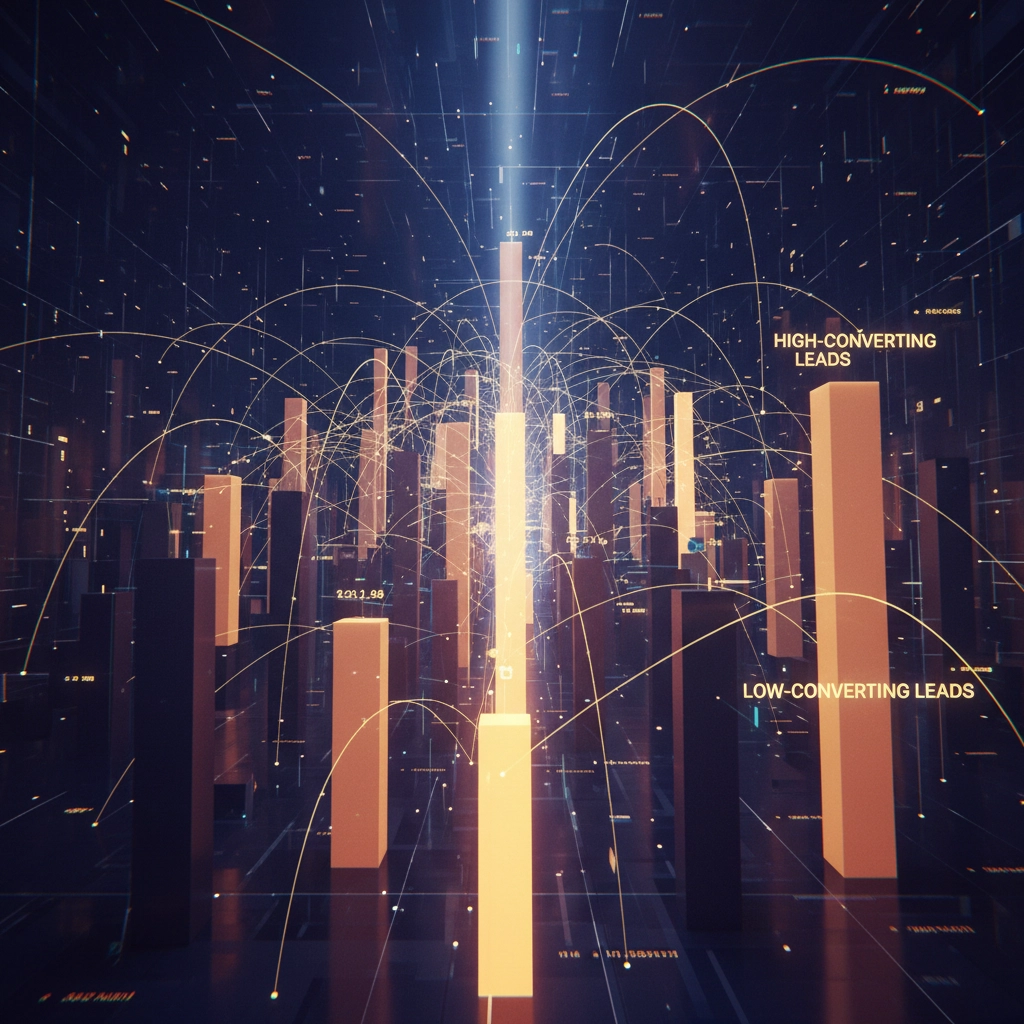Struggling for Growth? 5 Signs Your Sales Process Needs AI Automation (Before Your Competitors Beat You)
Growth feels impossible when you're stuck in the same old sales routine. Your team works harder, puts in longer hours, and still struggles to hit targets. Meanwhile, you hear whispers about competitors who seem to effortlessly scale their revenue with smaller teams.
Here's the thing: the companies pulling ahead aren't just lucky: they've recognized the warning signs that manual sales processes can't keep up with modern buyer expectations. If any of these five signs sound familiar, it's time to seriously consider AI automation before your competitors leave you behind.
Sign #1: Your Response Times Are Costing You Deals
Remember when responding to a lead within 24 hours felt fast? Those days are over. Today's buyers expect immediate engagement, and every hour of delay dramatically reduces your chances of conversion.
The math is brutal: companies that respond to leads within an hour are nearly 7 times more likely to qualify that lead than those who wait even two hours. Yet most sales teams still rely on manual lead routing, email notifications, and hope that someone will catch the next inquiry quickly.

While your team checks email and manually assigns leads, AI-powered systems instantly acknowledge new prospects, qualify their needs, and route hot leads to the right sales rep. The prospect gets immediate attention, and your team focuses on conversations instead of inbox management.
The real cost isn't just one lost deal: it's the compound effect of slower response times across hundreds of leads per month.
Sign #2: Follow-Up Becomes Follow-Through (Or Doesn't)
Manual follow-up processes are where good intentions go to die. Your best salespeople remember to follow up consistently, but even they miss prospects in the shuffle. Average performers? They might reach out once or twice before moving on to the next shiny lead.
This inconsistency creates massive gaps in your funnel. Some prospects receive thoughtful, persistent nurturing while others get forgotten after a single interaction. The result: you're leaving money on the table with every prospect who needed just one more touchpoint to convert.
AI automation eliminates these gaps by creating systematic, personalized follow-up sequences that adapt based on prospect behavior. When someone opens your email but doesn't respond, the system knows to try a different approach. When they visit your pricing page, it triggers a relevant conversation about next steps.
Your sales team stops playing guessing games about timing, and every prospect receives consistent nurturing regardless of which rep initially contacted them.
Sign #3: Conversion Rates Keep Dropping Despite More Activity
This one stings because it feels so unfair. Your team generates more leads than ever, makes more calls, sends more emails: but conversion rates continue declining. The harder you work, the worse your results become.
The problem isn't effort; it's efficiency. Without proper lead scoring and qualification, your team wastes time on prospects who will never buy while hot leads grow cold waiting for attention. When everyone looks equally promising in your CRM, everything becomes a priority, which means nothing actually is.

AI-powered lead scoring automatically ranks prospects based on conversion likelihood using dozens of data points your team can't possibly track manually. Behavioral signals, company characteristics, engagement patterns, and historical conversion data combine to create accurate predictions about which leads deserve immediate attention.
Instead of treating every inquiry the same way, your team focuses energy on prospects most likely to close while AI continues nurturing cooler leads with relevant content.
Sign #4: You're Stuck Choosing Between Personal Touch and Scale
The classic sales dilemma: do you prioritize thorough research and personalized outreach, or do you focus on volume to hit aggressive targets? Manual processes force this choice because there aren't enough hours in the day to do both well.
This trade-off kills momentum. When your team focuses on personalization, lead volume suffers and pipeline growth stagnates. When they prioritize quantity, generic messaging reduces conversion rates and increases customer acquisition costs.
Modern buyers expect both personal relevance and timely communication. They want to feel understood, not just sold to. AI automation makes this possible by analyzing prospect behavior, company data, and engagement history to create personalized experiences at scale.

Your team delivers thoughtful, relevant outreach to every prospect without sacrificing volume or speed.
Sign #5: You're Making Decisions Based on Gut Feelings Instead of Data
Flying blind in sales is expensive. Without real-time insights into pipeline health, conversion patterns, and prospect behavior, you're essentially guessing about what's working and what isn't.
Manual reporting takes forever, arrives too late to be actionable, and often misses crucial trends. By the time you realize a strategy isn't working, you've already wasted weeks or months pursuing the wrong prospects with the wrong messaging.
AI automation provides continuous intelligence about your sales performance. Which email subject lines generate the highest open rates? What time of day produces the best response rates? Which prospect characteristics predict successful conversions? The system learns constantly and adjusts automatically.
Instead of wondering why last quarter's results fell short, you get predictive insights that help you course-correct before problems become crises.
The Cost of Waiting
Here's what happens when you ignore these warning signs: competitors who embrace AI automation start pulling ahead. They respond faster, follow up more consistently, and convert prospects more efficiently: all while requiring fewer resources.
The gap compounds over time. While you're stuck managing manual processes, they're focused on strategy and relationship building. Their cost per acquisition drops while yours increases. Their sales cycles shorten while yours drag on.

But here's the good news: recognizing these signs means you're ready to make a change. Companies that implement AI sales automation typically see significant improvements in response times, follow-up consistency, and conversion rates within their first quarter.
The question isn't whether AI automation will eventually become necessary for competitive sales teams: it's whether you'll implement it before or after your competitors gain an insurmountable advantage.
Ready to Transform Your Sales Process?
If these signs hit close to home, you're not alone. The shift from manual to AI-powered sales processes is challenging, but the companies making this transition now are positioning themselves for sustained competitive advantage.
The technology exists today to solve every inefficiency mentioned above. The question is: will you implement it before your competitors do?
Visit Solsti.ai to learn how AI automation can transform your sales process and accelerate growth without adding headcount.
